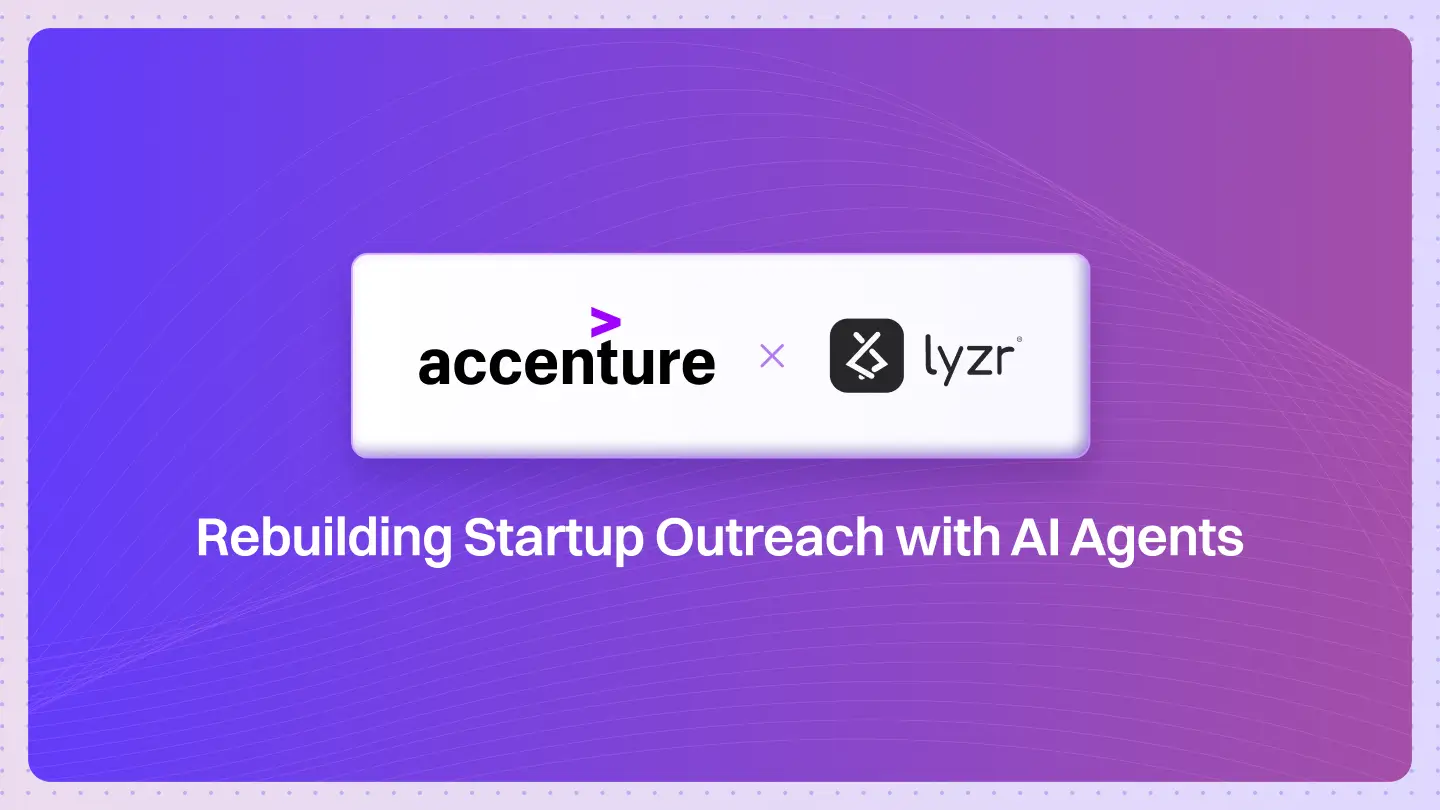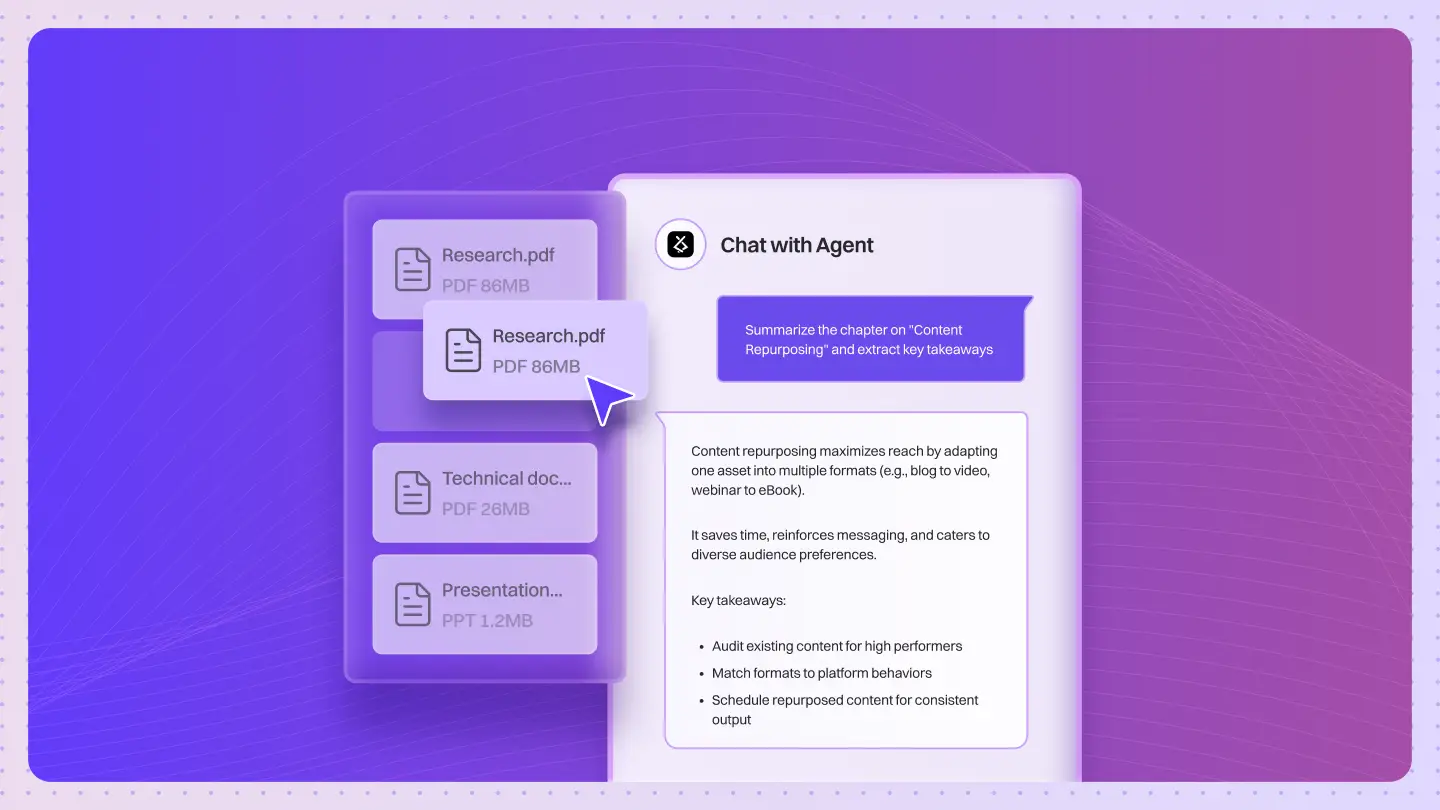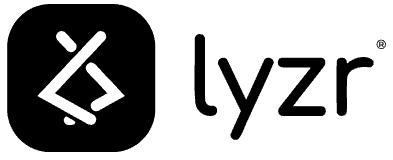Table of Contents
Toggle63% of corporate innovation teams say manual processes slow down their startup engagement efforts.
Even with the best strategies in place, running consistent, high-touch outreach at scale isn’t easy. The work quickly piles up, curating lists, sending emails, tracking responses, reviewing documents, and publishing updates. What should be a fast-paced process often gets held back by operational delays.
Accenture’s Startup of the Week (SOTW) program is a great example of a high-impact initiative built to spotlight emerging startups and drive visibility across teams. But as the program grew, keeping up with the volume became harder.
Outreach had to be personalized, data had to be parsed quickly, and content had to be ready on time, week after week.
To make the process faster, cleaner, and easier to manage, Accenture turned to Lyzr.
With AI agents designed for outreach, follow-ups, and newsletter generation, Lyzr helped rebuild the entire SOTW workflow, without disrupting what was already working. Here’s how it happened.
The Challenge
Running Accenture’s Startup of the Week program meant working across outreach, intake, content, and collaboration, every week, on repeat. But as the initiative expanded, so did the operational strain. Here’s where things started to slow down.
1.Automated Outreach
Even with a well-curated startup list, the outreach process was heavily manual. Each email had to be drafted, sent, tracked, and followed up, all by hand. Personalization was necessary to keep engagement high, but the volume made it hard to scale without shortcuts.
| Task | Dependency | Impact on Workflow |
|---|---|---|
| Email drafting | Human effort | Time-consuming, inconsistent |
| Personalization | Manual editing | Risk of errors or repetition |
| Tracking replies | Inbox-based | Hard to manage at scale |
| Follow-up scheduling | Ad hoc | Prone to delays and misses |
2. Response Management
Once outreach went out, responses came in from multiple channels. Startups replied directly to emails, others used the hosted form, and many attached pitch decks, team profiles, or external links. Each submission came in a different format, making it difficult to organize and manage at once.
Example:
Some startups replied with just a sentence and a link to their website. Others submitted full decks with no explanation. In a few cases, decks were zipped or password-protected, causing extra delays. The team had no standardized way to process or prioritize responses.
3. Data Extraction and Storage
With every startup providing information in a different format, the team had to manually extract key details like founder names, sectors, unique selling points, and funding history. This meant sifting through email threads, slide decks, and form entries, all without structured outputs.
| Source Type | Format Variability | Extraction Effort |
|---|---|---|
| Emails | Free-text, mixed detail | High |
| Slide decks | No fixed structure | Very high |
| Form submissions | Partially structured | Medium |
| Links/Docs | External content | Variable |
4. Content Generation
The newsletter, the final product, depended entirely on clean, structured inputs. But since the data wasn’t standardized, every edition had to be written from scratch. This involved interpreting content, highlighting key aspects, and editing for tone and format.
Example:
In one cycle, a startup submitted a highly technical slide deck that required simplification and reframing for a broader audience. Without structured prompts or prior summaries, writing the newsletter entry meant starting from a blank page, under a tight deadline.
5. Integration Complexity
Even if individual problems had point solutions, like forms for intake or templates for emails, stitching the full workflow together was the hard part. Emails, document parsing, cloud storage, newsletter generation, and scheduling had to work in sync. But without system-level integration, the process remained fragmented.
Each handoff between steps relied on human intervention, which added delay, increased the risk of errors, and made the workflow difficult to scale week over week.
Rebuilding the Workflow: How Lyzr Automated the End-to-End SOTW Process
To keep the Startup of the Week program running at scale, what was needed wasn’t just automation , it was orchestration. A system that could handle personalized outreach, manage incoming data, extract insights, and generate content, all while fitting within enterprise-grade infrastructure.
That’s where Lyzr came in.
Lyzr deployed a purpose-built AI agent system that transformed how Accenture ran the entire SOTW workflow. From startup outreach to newsletter generation, each step was redesigned to be fast, reliable, and hands-off, without compromising on quality or security.
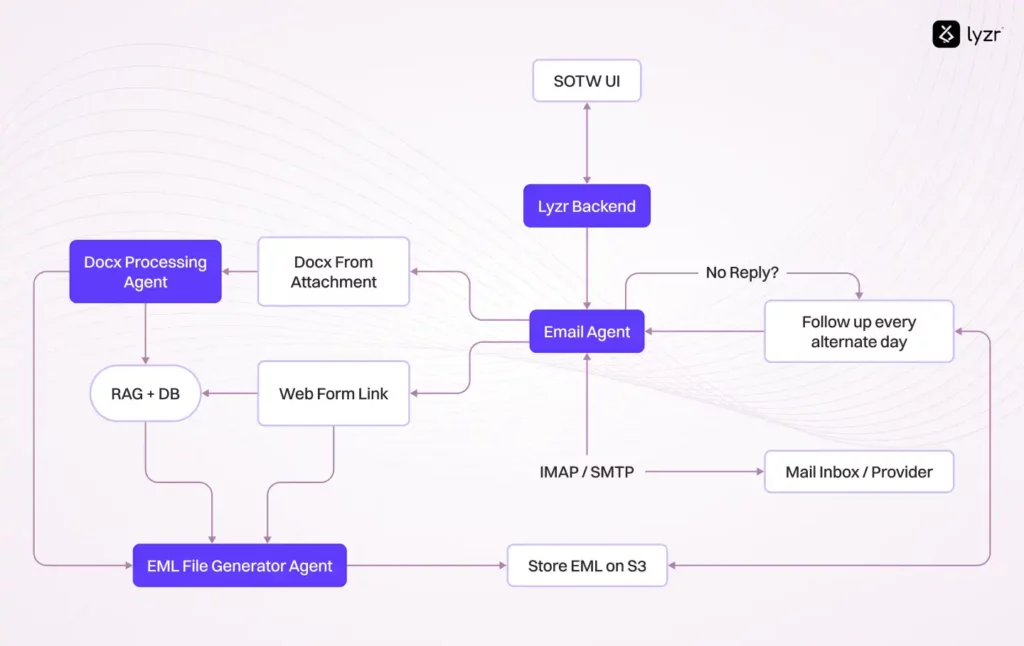
1. Automated Outreach via Email Agent
At the core of Lyzr’s setup was an Email Agent, designed to send personalized outreach at scale. Once a startup list is uploaded, the agent crafts and sends individual emails automatically, factoring in variables like company name, sector, and context.
It doesn’t just send emails, it manages them. The system tracks delivery, reads, and replies, and automatically schedules follow-ups for startups that don’t respond within 48 hours.
| Feature | Description |
|---|---|
| Personalized messaging | Dynamic email templates with context injection |
| Auto-scheduling | Follow-ups every 2 days for non-responders |
| Email tracking | Monitors opens, replies, and bouncebacks |
| Integration-ready | Works with SMTP/IMAP systems |
2. Response Handling Through Web + Email Intake
Lyzr ensured that startup responses could flow in through multiple channels, without adding complexity. Whether a founder replied to an email or submitted via a web form, the system ingested the data, identified the startup, and routed it to the parsing pipeline.
The intake layer supports both unstructured and semi-structured inputs, giving startups flexibility while maintaining backend consistency.
Example:
A startup might submit a pitch deck through the hosted form, while another replies with just a paragraph via email. In both cases, Lyzr’s backend converts the input into structured fields for parsing, no manual tagging needed.
3. Document Parsing & Data Extraction with Fine-Tuned Agents
Once responses were ingested, Lyzr’s parsing agents kicked in. These were powered by fine-tuned versions of GPT-4o-mini, built specifically to extract relevant startup data from emails, pitch decks, and docx files.
The system scanned documents for company name, founding team, key product highlights, and funding details. Files were automatically categorized and uploaded into a secure, centralized store.
Auto-Parsing Workflow
| Input Type | Parsed Fields | Output Format |
|---|---|---|
| Email body | Company name, intro summary, sector | JSON object |
| Docx attachments | Detailed team info, product highlights, logos | Structured Markdown |
| PDFs/Slides | USP, funding stage, market focus | Key-value JSON |
4. AI-Powered Newsletter Drafting
With structured startup data in place, Lyzr’s content engine took over. It generated a polished newsletter draft using GPT-4o-mini, dynamically pulling the most relevant points and turning them into clean, editorial-ready copy.
Administrators could review and finalize the content via a simple UI, ensuring brand voice and quality remained intact, without having to write from scratch.
5. Integrated, Secure Infrastructure for Enterprise Deployment
All of this ran within Accenture’s secure AWS environment. Lyzr deployed the solution using isolated containers and integrated it with enterprise authentication (Okta + SAML), role-based access, and encrypted file storage.
Nothing left the enterprise perimeter, meeting compliance and data governance requirements out of the box.
| Layer | Technology Used |
|---|---|
| UI Hosting | Amazon Amplify |
| Backend APIs | EC2-hosted Lyzr Agent Services |
| File Storage | Amazon S3 |
| Parsing + LLM | GPT-4o-mini (fine-tuned) + RAG models |
| Email Engine | SMTP/IMAP + EML Generator |
| Authentication | Okta + SAML |
| Security Layer | Secrets Manager, KMS, CloudWatch |
The Outcome: From Reactive Operations to a Self-Running Workflow
The biggest win wasn’t just automation, it was predictability. Every part of the Startup of the Week program now moves on schedule, with fewer bottlenecks and far less intervention. From startup outreach to final newsletters, the workflow now runs like a system, not a scramble.
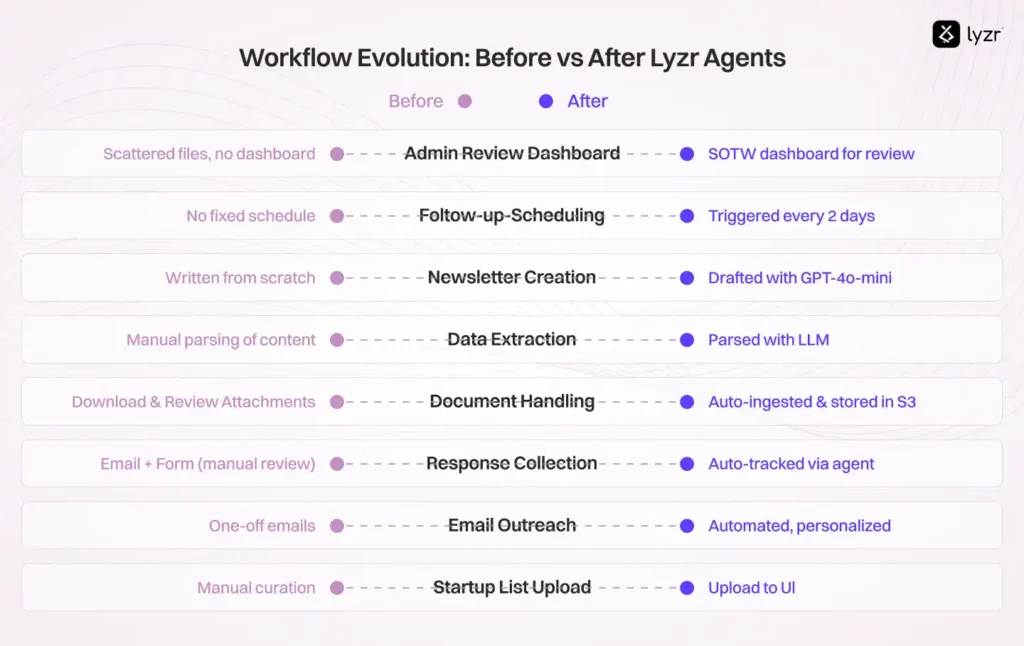

With Lyzr agents handling outreach, parsing, scheduling, and content generation, the team shifted from chasing tasks to reviewing outcomes. The result? A cleaner, more consistent pipeline that doesn’t rely on human effort to stay on track.
Closing the Loop: A Weekly Workflow That Scales Without Slowing Down
Startup scouting doesn’t pause, and neither does the pressure to surface the right stories, on time, every time. What Accenture needed wasn’t just automation, but a system they could trust to run week after week without breaking down.
With Lyzr Agents orchestrating the end-to-end workflow, from outreach to content generation, the Startup of the Week program became what it was always meant to be: consistent, scalable, and easy to operate.
No more chasing replies. No more scattered files. No more last-minute writing.
Just a single system, quietly working in the background, keeping everything (and everyone) on track.
Thinking of scaling a recurring workflow inside your innovation team? Book a demo to see how Lyzr Agents can help.
Book A Demo: Click Here
Join our Slack: Click Here
Link to our GitHub: Click Here

